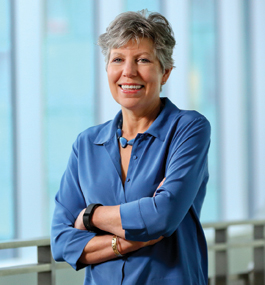Letter From the Editor

Mike Lovett
Laura Gardner
During the 1940s, a young biologist at Johns Hopkins wondered how fireflies get their spark. William McElroy collected tens of thousands of the bugs — reportedly, he’d pay local kids a few pennies for every hundred they caught — with no specific goal in mind, just an educated hunch that understanding their glow might yield useful information.
McElroy discovered the five chemicals that enable fireflies to convert energy into light. More important, he isolated adenosine triphosphate (ATP), the molecule that determines how much light is emitted when the four other chemicals are present.
ATP, called the “energy currency” of life, is the main source of energy in the cells of all living things. Approximately 2 ounces of ATP, recycled constantly, can power the human body for a day. McElroy developed a simple tool to measure ATP in cells, revolutionizing the way biologists do research.
If you read our cover story, “Scientific Minds Over Matter,” by Lawrence Goodman, you’ll discover that ATP plays a starring role in helping physicists Zvonimir Dogic ’95, PhD’01; Seth Fraden, PhD’87; and Aparna Baskaran figure out how to make inanimate soft matter like gels, foams and polymers seem to come alive, able to power their own movement without human intervention.
All told, 16 Brandeis scientists — physicists, biologists and mathematicians — research this “active” matter. Fraden is the group’s director. What powers their research? Curiosity, interdisciplinary collaboration and funding from the National Science Foundation (which also funded McElroy’s firefly research).
Brandeis’ pioneering active-matter studies could one day lead to the creation of self-healing artificial organs, cancer cell-destroying nanobots that propel themselves through the bloodstream, or petroleum that can flow through a pipeline without the aid of pumping stations.
I’ve heard scientists talk about the slog of research — the relentless grind before discovery, if there is any discovery at all. I’m sure there’s some of that in Fraden’s lab. But, as Goodman describes the work happening there, there’s also a sense of excitement, even wonder.
Fraden and his colleagues don’t always know where an experiment will lead. They come from different backgrounds and approach challenges from different perspectives. But it’s clear they draw from the same well of ingenuity.
Great science is full of examples of random discoveries leading to unlikely outcomes — like finding the key to cellular energy in the secret life of lightning bugs.
Laura Gardner, P’12
Editor-in-Chief
